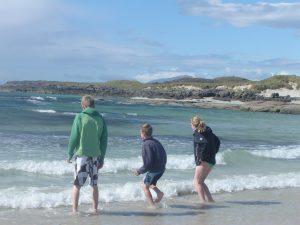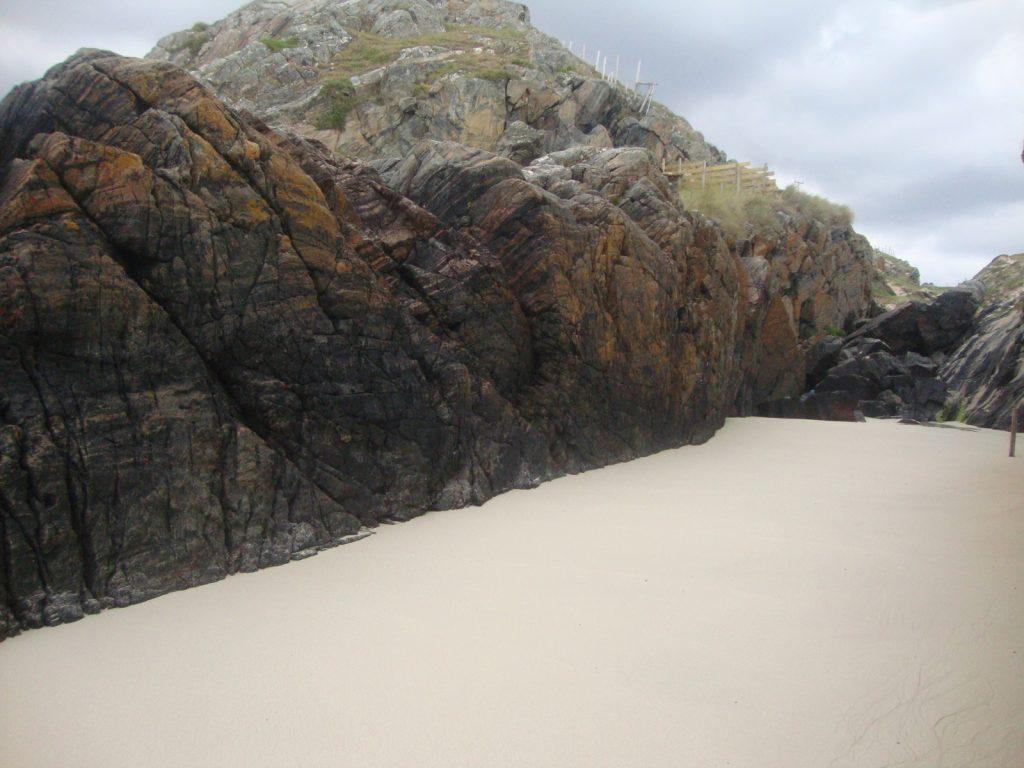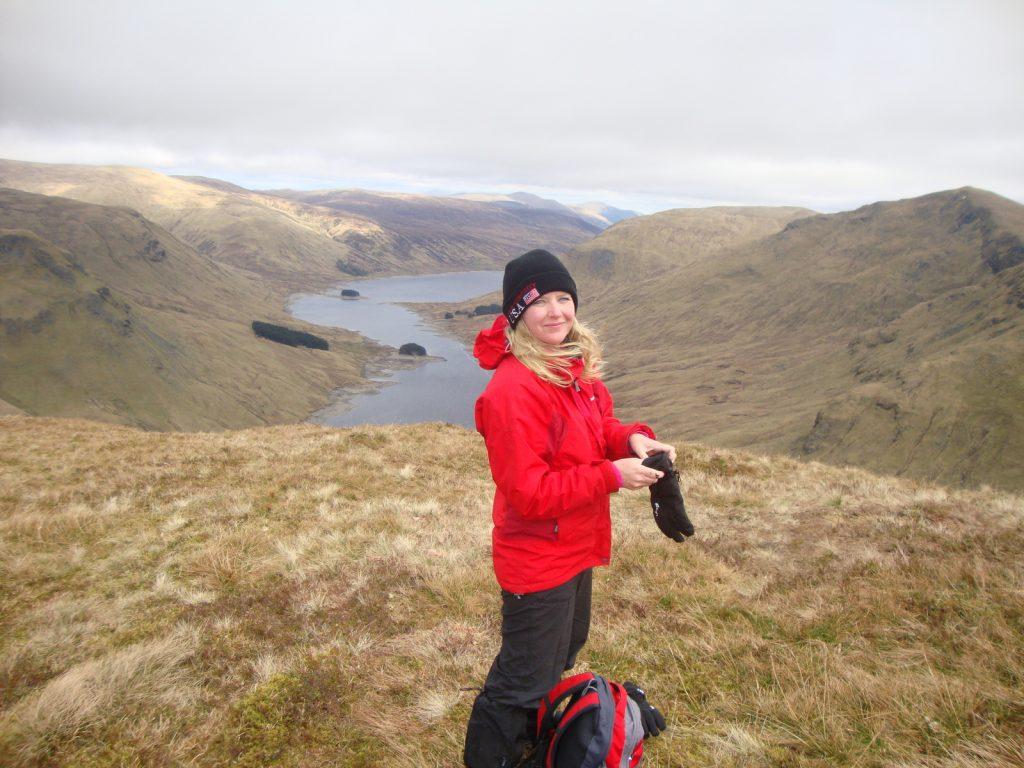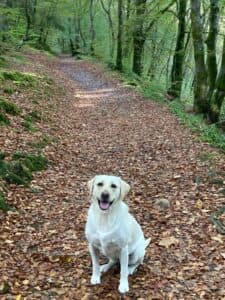1. Bring a variety of clothes no matter what the season!

It doesn’t matter what time of year you are visiting Scotland, you can’t plan for our unique island weather system.
I’ve sunbathed on a beach in a bikini at the beginning of April and enjoyed a snowfall amongst the blossom of cherry trees in June. Our weather is what makes our landscape beautiful but you need to make sure when travelling around Scotland that you dress for every occasion.
A light rain coat is a must as even on sunny days there is a good chance that a light rain cloud might pass over; but you should also bring t-shirts and shorts for that climb up that mountain or for that moment when the sun breaks through and lights up the cleanest bluest ocean you’ve ever seen and you just have to get in there….even if it’s just for a paddle!
2. If you’re travelling in the height of summer, July and August, make sure you’ve booked your accommodation in advance.
There is ample choice of accommodation to choose from in Scotland whether it’s a hotel, B&B, bunkhouse, campsite, Airbnb, self-catering accommodation or travelling around in a campervan or motorhome.
Visitors to Scotland are increasing year on year so book now to avoid disappointment. This especially applies when you visit one of the many Scottish islands on the west coast of Scotland where you may not be able to get off the island without a ferry if you can’t find anything. I had the experience years ago of travelling up to Skye with 3 young children in tow for a couple of nights after visiting friends in Ullapool. I thought an island the size of Skye would have plenty of accommodation (which it does) but didn’t account for the fact that it was school holidays! Fortunately, Scottish hospitality kicked in and a small café with rooms above found us a single room and put down air mattresses for us on the floor.
Thanks to the kindness of the islanders, it worked out great but it took a couple of glasses of whisky at the end of the night to relieve the stress! Campervan and motorhome holidays are also increasing in popularity as they offer a great way to explore Scotland without having to worry about booking everything in advance but make sure you book early.
3. With our stunning scenery and friendly people, it’s little wonder that so many people want to visit Scotland, however you will still find empty wildernesses within easy reach.
Why? Well it has to be our friend the midge. Friend you ask? Yes! Every Scot loves the midge quite simply because without them Scotland would be overrun with people soaking up the views, the food, the history and the people.
A must for every summer traveler to Scotland is insect repellent and whilst there are several on the market, Skin so Soft by Avon, despite its pleasant smell, is the best to keep the Scottish midge at a distance. You can order on line before your trip or pick it up around the Highlands on route. Midges love trees, rain, water and warmth so if you’re planning to visit Scotland in June, July and August when they are out in their masses, plan your days accordingly to suit the weather. A walk through one of Scotland’s ancient woodlands on a damp rainy day is not a good idea unless you have repellent; far better to stick to the coast where the wind will blow them away. If camping or planning on being outside in our long light evenings, keep moving and make sure you cover up to keep them off your skin. Alternatively, make a camp fire or take up smoking until the sun goes down and they disappear until sun rise again!
4. Ensure you give yourself plenty of time to get places.

The main motorways in Scotland are much quieter than elsewhere in the UK but our country roads in the north and west of Scotland can take much longer to travel along than you think. A large proportion of the roads in our islands and the more remote areas are single track roads with passing places.
Extra care needs to be taken to ensure you don’t crash into oncoming traffic as you turn a corner. There are no right of way rules as such when driving along single track roads unless stated by road signs, but courtesy is expected and if you see oncoming traffic coming, you should pull in at the nearest passing place on your side of the road or wait opposite a passing place on their side of the road until they have passed.
This simple courtesy will ensure everyone gets where they want to go quicker without waiting for drivers to reverse back around corners to passing places.
5. Relax and slow down to enjoy the views and the wildlife.
Our landscape, both on land and around the coast, supports an incredible array of wildlife including deer, capercaille, dolphins, whales, sea eagles, pine martins, ospreys, wild cats, seals, red squirrels and basking sharks. If you keep your eyes open you will see several of these on a trip around Scotland so make sure you have your camera to hand to capture that moment.
My husband and I have a competition on away days and holidays to see who can spot the most wildlife with extra points given for the rarer animals such as sea eagles and emperor stags. Just make sure the driver keeps one eye on the road too!
6. Do your homework, plan your tour and don’t follow the crowd!
Scotland presents some of the world’s most beautiful and accessible wildernesses so make sure you explore it properly. There are some places that you definitely don’t want to miss and should be included on any tour of Scotland but remember that whilst Loch Lomond and Loch Ness are stunningly beautiful, so too are Loch Assynt, Loch Affric and Loch Maree, just quieter.
The same is to be said of Scotland’s 790 islands which are grouped into the Inner Hebrides, the Outer Hebrides, Shetland and Orkney. Our experience at Four Seasons Campers sees 70% of our campervan customers heading up Loch Lomond and on to Skye. It’s a fantastic trip and links nicely to the North Coast 500 route which tours around the north coast of Scotland, but there are so many other beautiful and romantic quieter islands to visit whilst in Scotland. If you’re looking for inspiration take a look at the Caledonian Macbrayne ferry website to see where they sail to and check out timings.
My favourite holiday ever (in the world) was to the little island of Colonsay in the Inner Hebrides. We took our bikes and cycled everywhere including over to the idyllic pretty island of Oransay which you can get to at low tide across the sand and visit the old monastery enjoying the abundant wild flowers along the single tarmacked road with views across the ocean. The Outer Hebridean islands of Harris and Barra are well worth the longer ferry journey from the mainland to view the wide white pristine beaches below towering majestic mountains.
7. There’s more to Scottish history than Braveheart so make sure you plan a trip to one of the National Trust for Scotland’s many visitor attractions.
My favourite is the Culloden Battlefield, south east of Inverness where you are surrounded by a 3D exhibition showing individual accounts of the battle. Then venture outside and soak up the atmospheric battlefield whilst listening to your own headset explaining the history of this important part of Scottish history. Castles, architectural buildings and stories of Scotland’s high points will astound you and give you a better understanding of the history behind the Scottish people.
Learn about Scotland’s high points such as our place as one of the worlds most important trade and commerce centres in Glasgow; and our low points during the time of the Highland clearances which saw villages wiped out to be replaced by sheep by their landowners, and an exodus of Scotland’s population to America and Australia. What most people don’t know is that Scotland is home to some of the most ancient neolithic sites in Europe with standing stones found scattered along the west coast and into the Outer Hebridean island of Lewis as well as in the northern island of Kilmartin Glen in Argyll is only 2 hours from Four Seasons Camper’s base by Loch Lomond has a special place in my heart. Once home to the original Scots who migrated from Ireland, the founding fathers formed the Kingdom of Dalriada here and anointed its Kings at Dunadd, the capital. There is still an air of genteel mysticism as you tour around the area and it’s not hard to understand why they chose to settle in such a beautiful part of Scotland.
8. Stay longer than you think you need, our landscape is varied and there’s much more to see than you think.

Scotland is a small country but it has an incredibly varied landscape due to its remarkable geological history which saw the land that makes up Scotland today travel the world from near the Equator to the South Pole, and then north to its present location. The record of this journey is preserved in the variety of rocks and landforms that make up Scotland which reveal shifting plates, continents splitting and colliding, ancient volcanos and ice ages.
If you like your geology, head to Sutherland and the Assynt area which was declared a National Geopark due to the incredible geodiversity found in this area. International visitors to Scotland often tag a trip to Scotland onto their London trip and think that they’ve had a flavour of Scotland if they see Edinburgh and Loch Ness. You couldn’t be more wrong. From the lush rolling hills of the west coast to the high granite plateauxs and steep-sided glens and corries of the central highland area to the white sandy beaches of the north west and islands and the ancient Caledonian forests set against orange and purple heather moorland, the Scottish landscape is a rainbow of textures and colours with the five main cities equally distinctive in their architecture and culture.
If you haven’t too much time to spare, a trip to the island of Arran, otherwise known as ‘Scotland in miniature,’ and is easily reached by road and ferry just south west of Glasgow.
9. Scottish Food and Drink offer some of the finest ingredients in the world so be sure to not only taste it, but also stock up on it to take home.
As well as our delicious Angus Beef, fresh seafood such as scallops and langoustines, an array of cheeses and pickles; be sure to try some black pudding, white pudding and haggis whilst you are here and accompany them with the traditional malt whisky or gin if you prefer from one of the many newly established gin distilleries.
10. Our top tips wouldn’t be complete without mentioning outdoor pursuits and no matter what your levels of fitness, make sure that you get outside into the outdoors on your visit to Scotland and experience our natural landscape.

As well as being a climber’s delight with 282 Munro mountains (mountains over 3000 feet to climb); there are also 2,371 miles of cycle routes that include 644 miles of traffic-free routes over railway paths, canal towpaths, forest tracks and segregated cycle lanes.
Our island landscape on the west coast is both a sailors and kayakers delight for those who want to explore by sea. And for those who want more leisurely exercise, there’s always a loch or a little hill offering fine views and copious amounts of fresh Scottish air!


